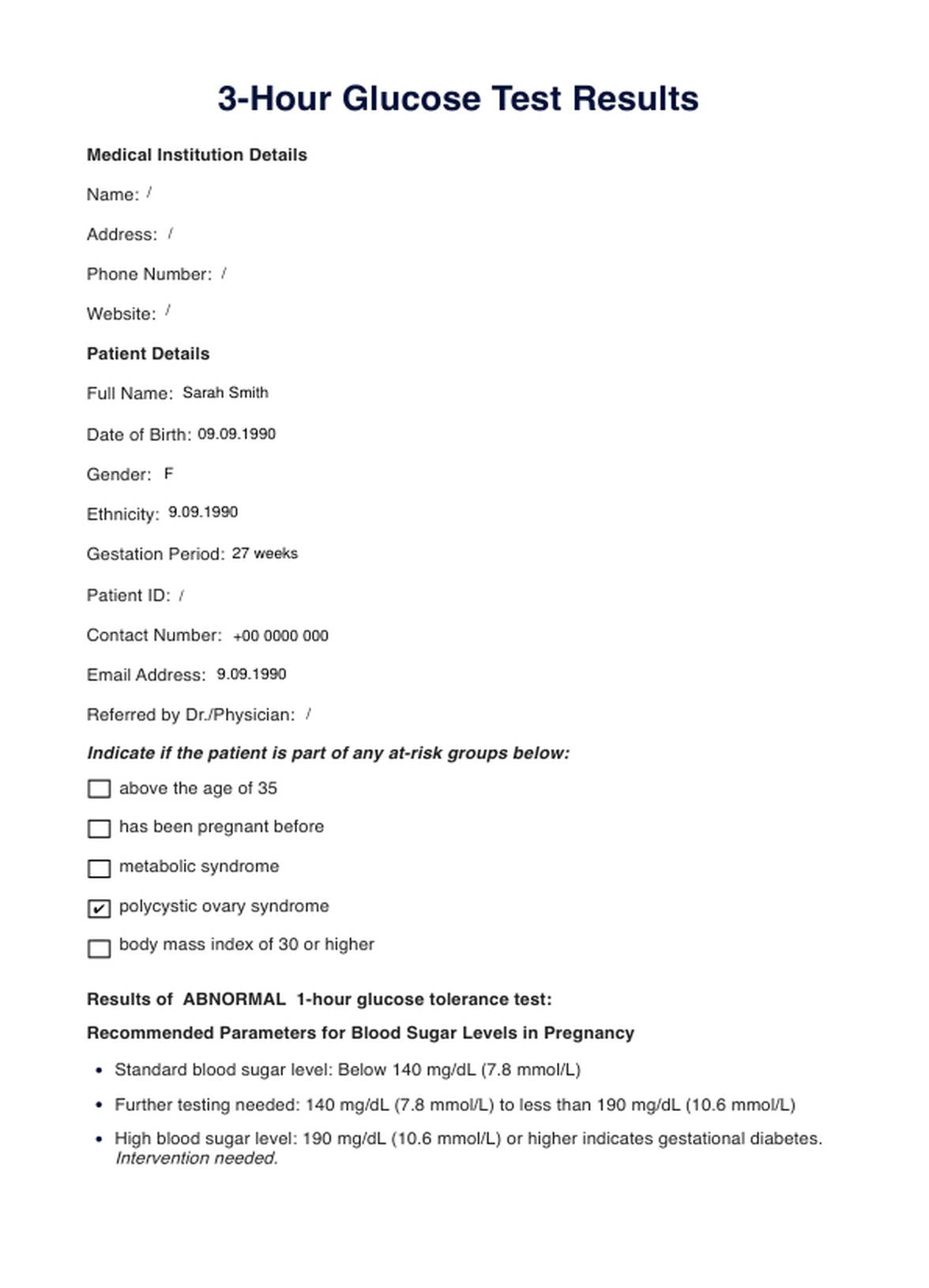3-hour glucose test result charts are typically requested by healthcare providers, including doctors, endocrinologists, and midwives, to monitor the blood sugar control of pregnant patients displaying glucose levels that could potentially indicate gestational diabetes.












